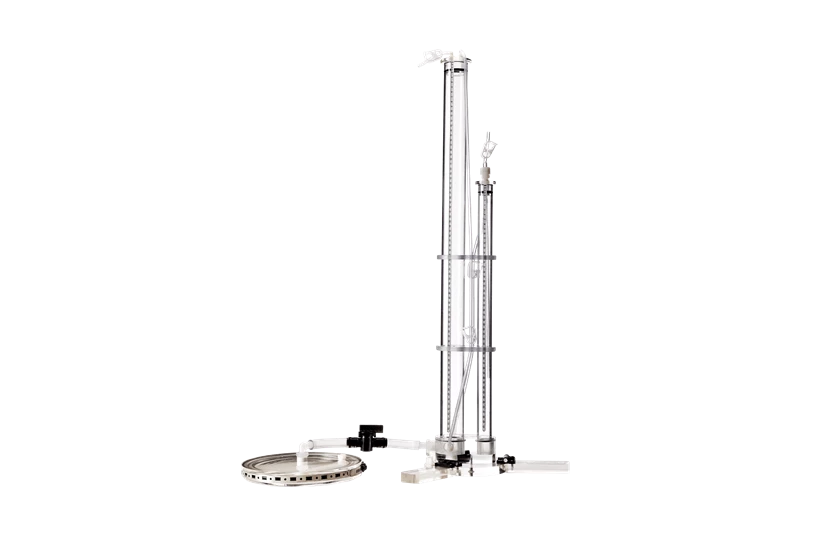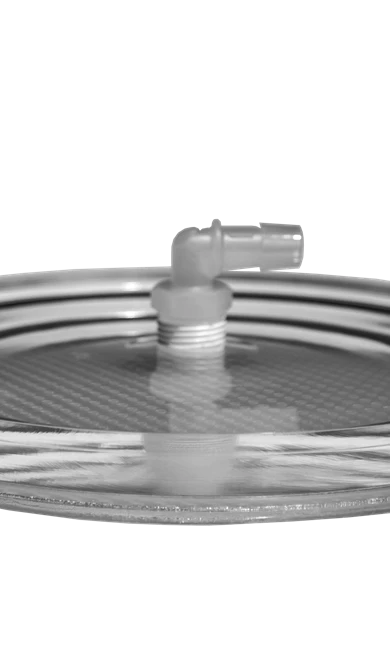

Measure the hydraulic properties of unsaturated soil with the Tension infiltrometer set. Suitable for on-site measurements.
Method
Tension infiltrometers are designed to measure the unsaturated hydraulic properties of soils. Water is allowed to infiltrate soil at a rate which is slower than when water is pounded on the soil surface. This is accomplished by maintaining a small negative pressure on the water as it moves out of the infiltrometer disc into the soil.
In contrast, the saturated hydraulic conductivity of surface soils is often determined with single or double ring infiltrometers. With single or double ring infiltrometers, water at atmospheric pressure is allowed to infiltrate soil, initially fast, and at a slower rate once the open spaces in the soil fill up with water. When the rate of infiltration has stabilized, the infiltration rate is measured and used to compute the saturated hydraulic conductivity.
However, because with ring infiltrometers water is pounded on the soil surface, a good portion of the water might infiltrate through cracks or wormholes, and a reduced amount will infiltrate through the soil matrix. By maintaining a small negative pressure on the water as it is infiltrating into the soil, water will not enter the large cracks or wormholes as much but will infiltrate through the soil matrix. The higher the negative pressure applied to the water, the more soil pores below the soil surface are without water, and thus the soil becomes more unsaturated. With the tension infiltrometer one can determine the unsaturated hydraulic conductivity.
The range of tensions that can be set is (for practical reasons) limited to tensions between 0 and 11.8 inch (0 and –30 centimeter) H2O. By setting the tension at or close to zero, one could obtain an infiltration rate that approximates the saturated hydraulic conductivity.
There are several methods that can be used to calculate the hydraulic properties from the tension infiltration data. One method assumes of a log-linear relationship between tension and hydraulic conductivity, as first described by Gardner (1958). This is a valid assumption for the optimum tension range of the infiltrometer. This method can be found in the literature and is described in detail in the manual that comes with the Ring infiltrometer.
Other methods to calculate the hydraulic properties from the infiltration data use inverse parameter estimation methodology to calculate the van Genuchten parameters (Simunek et al. 1994).
Applications
Set contains
| Tension infiltrometer set | |
|---|---|
| Diameter disc | 7.87 inch | 20 cm |
| Inside diameter water reservoir | 2 inch | 5,1 cm |
| Inside diameter bubbling tower | 1 inch | 2,54 cm |
| Length water reservoir | 31.9 inch | 81 cm |
| Bubbling pressure membrane | 11.8 inch | 30 cm H2O |
| Reading accuracy | 0.03 inch | 1 mm |
| Weight | 8.26 lb | 3,75 kg |
| Filename |
|---|
| Manual 09.09 Tension Infiltrometer |